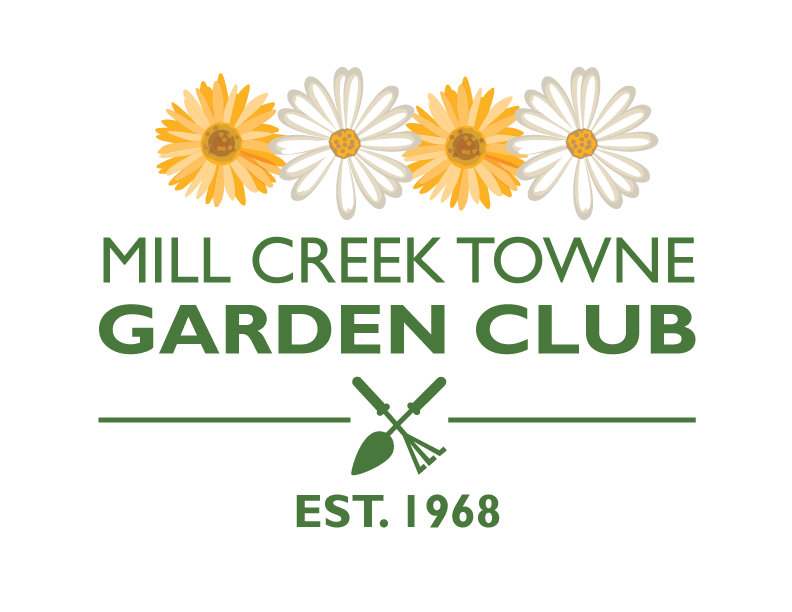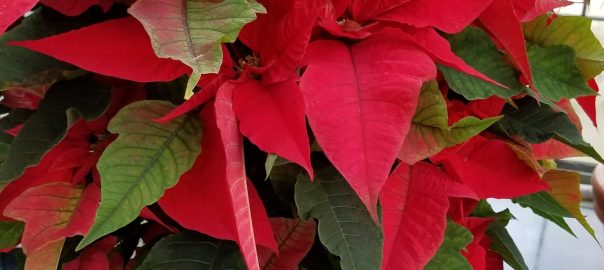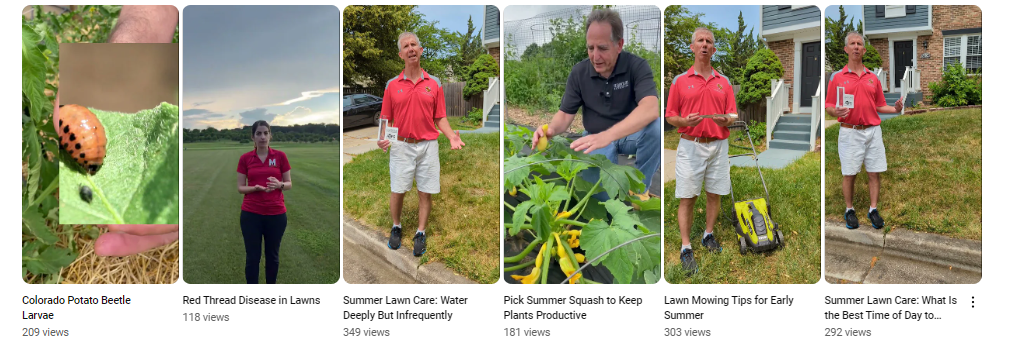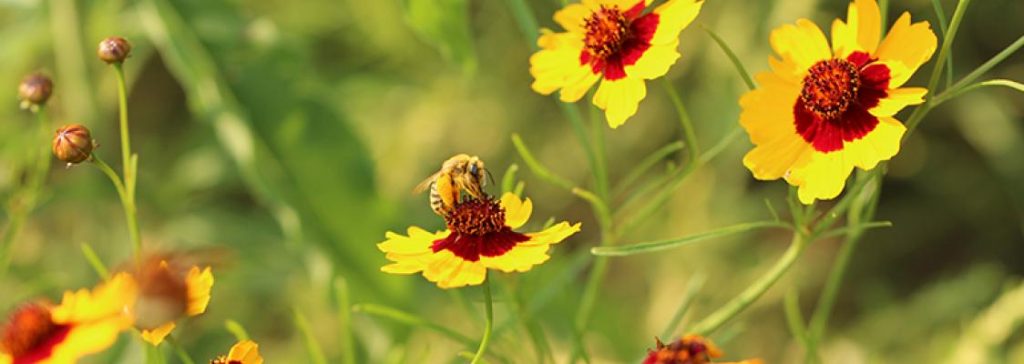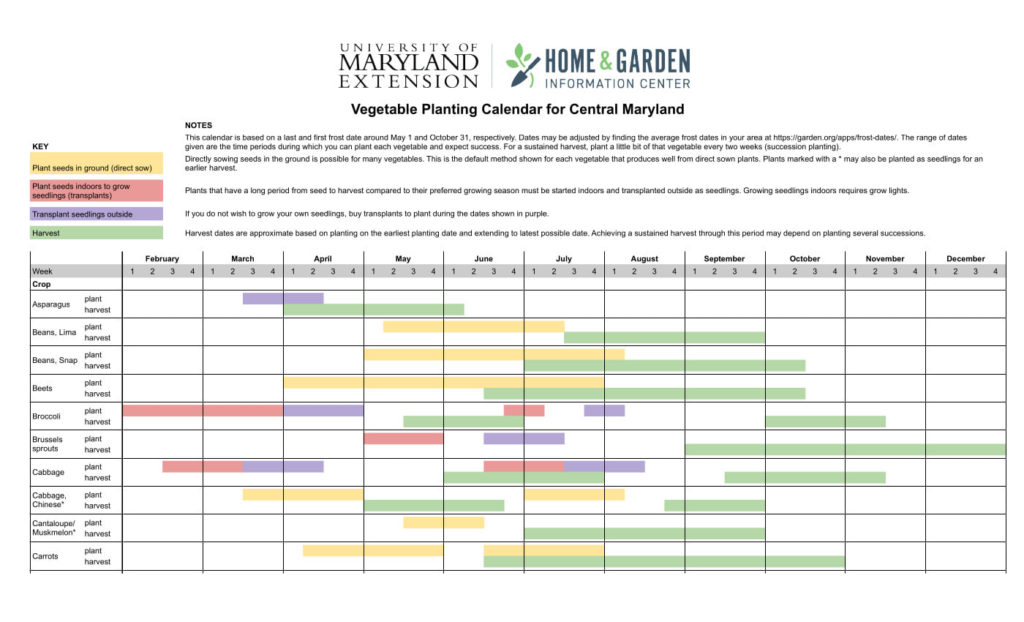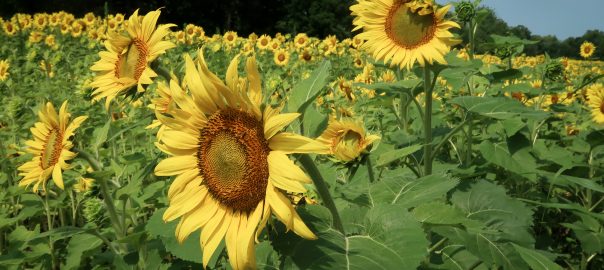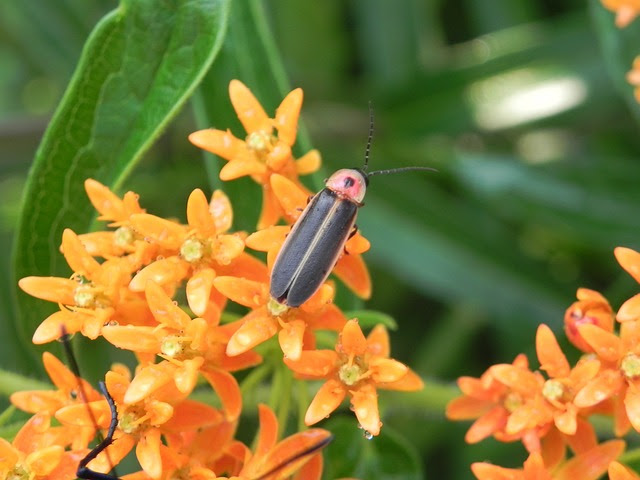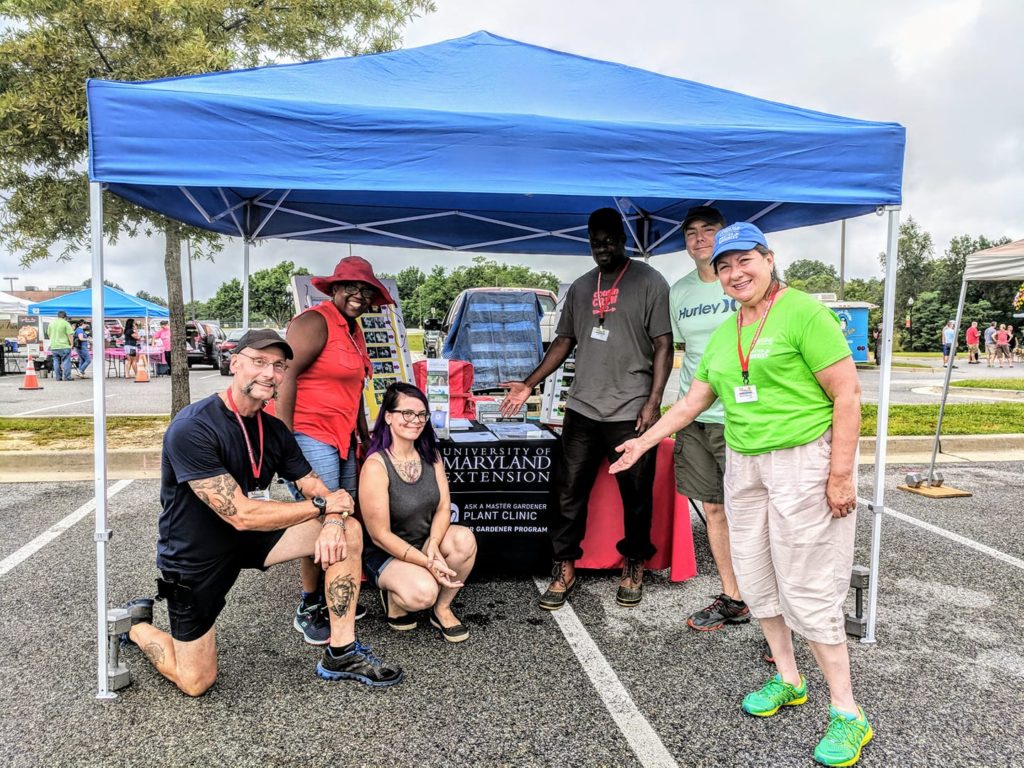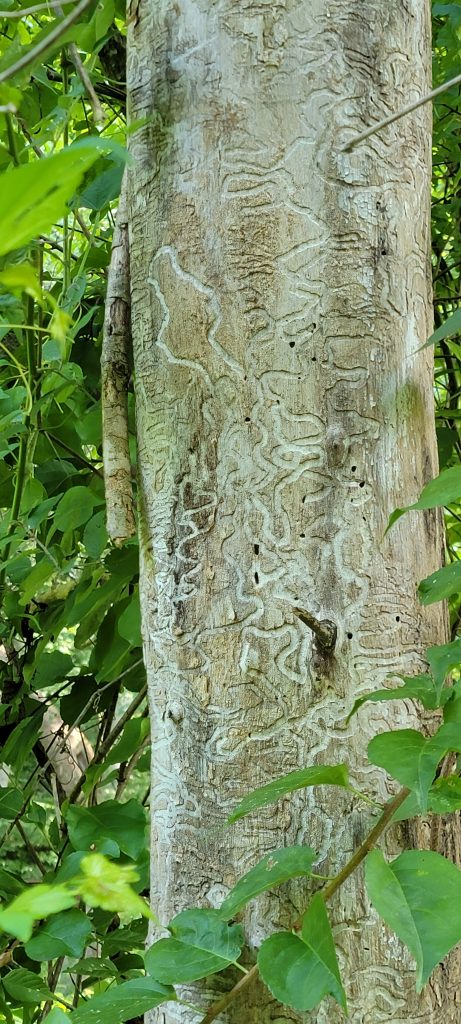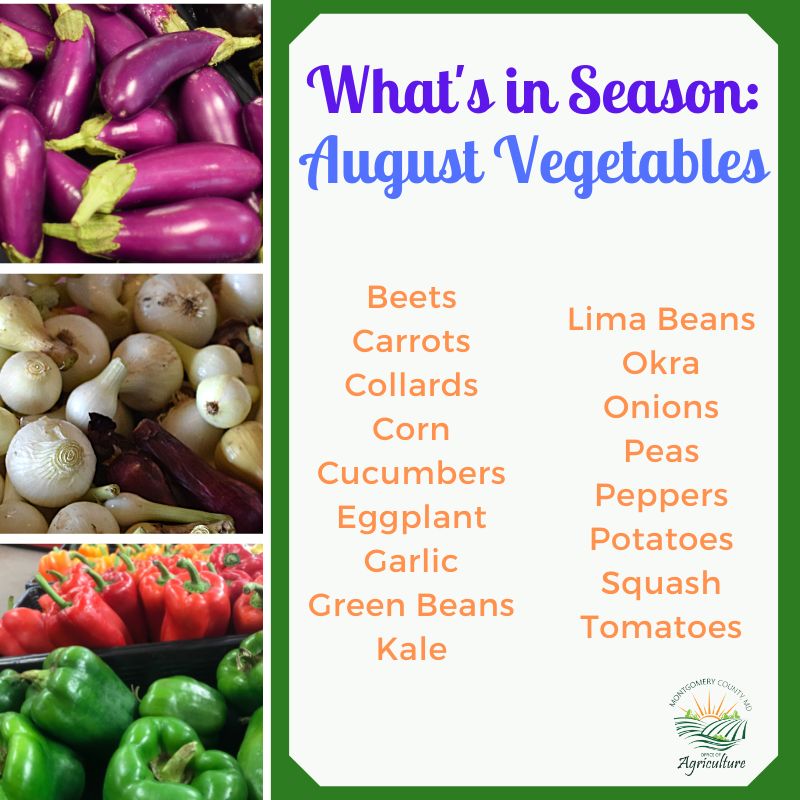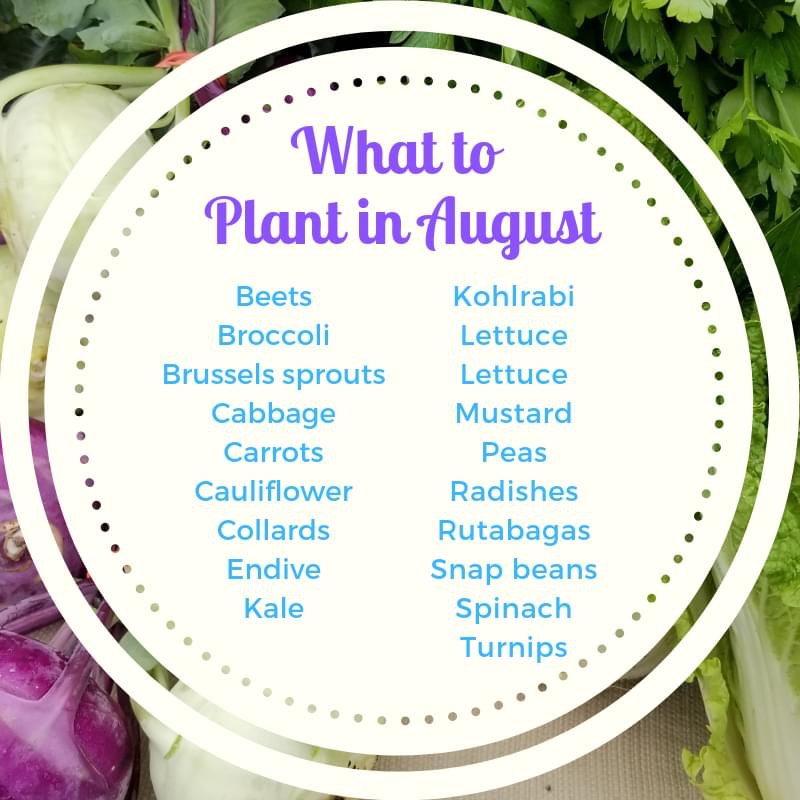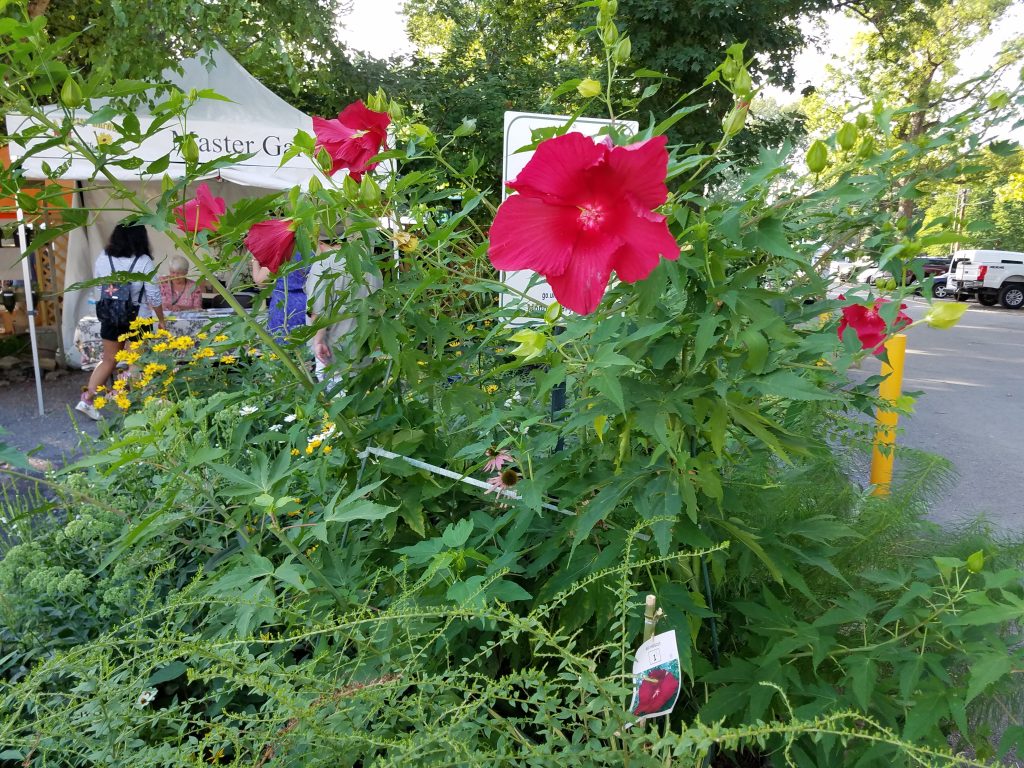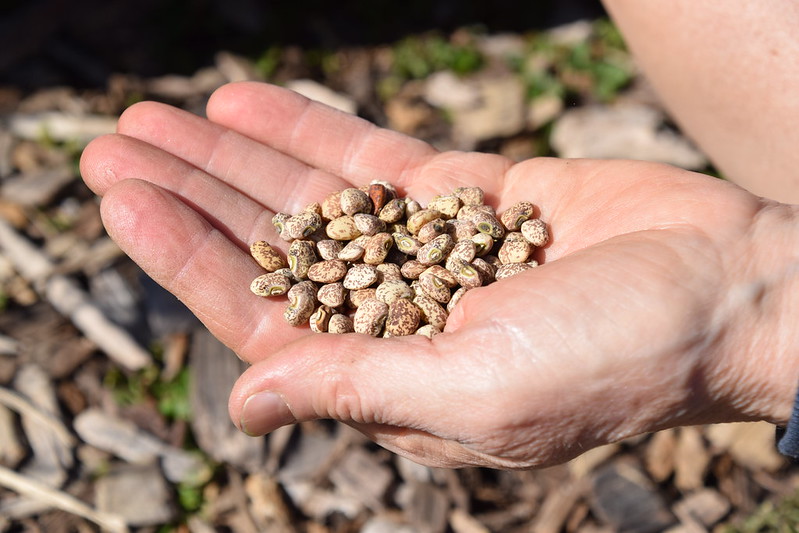Hello Friends, Neighbors, Fellow Gardeners,
Seasons Greetings! We wish you and your family a Happy Hanukkah, Merry Christmas, Happy Kwanzaa and Happy Healthy New Year! Here are some garden tips, educational opportunities, and videos for December. A lot of gardening events are announced on Facebook as well as on our website. Some upcoming events/resources include UMD Home and Garden Information Center: Ask a Garden Question, A list of book recommendation for young gardeners, Meadowside Nature Center December Programs, Brookside Garden’s Greenscapes Event, online tutorials on winter sowing, tips on how to plant tulip bulbs in pots now for forced March/April Blooms, a video on pruning trees, tips on how to choose a poinsettia, American Horticultural Society’s Great American Gardeners Webinar Series, and more! These events will be hosted as online or live events.
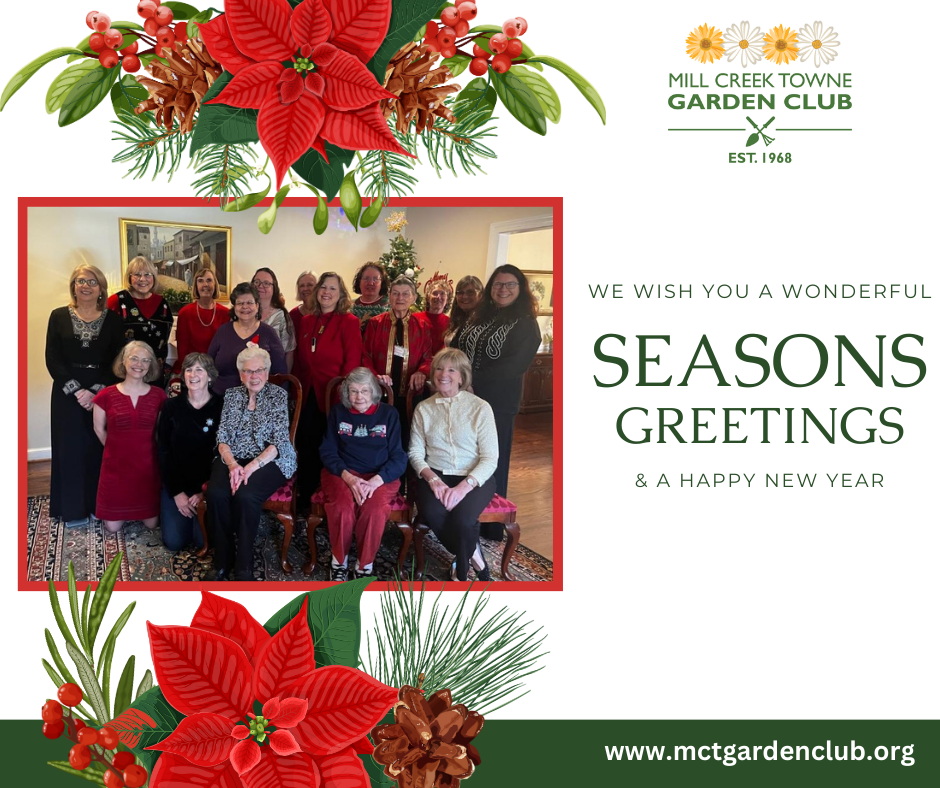
Seasons Greetings! We wish you and your family a Happy Hanukkah, Merry Christmas, Happy Kwanzaa and Happy Healthy New Year!
Dear Neighbors,
Our 2023 year of the Mill Creek Towne Garden Club began with an outstanding presentation entitled “Birds in Your Garden” by Dr. Dan Neumann, the Associate Director for Neutron Science and Technology at NIST and a true bird lover! It was well attended by both club members and the community. We all certainly learned a bit more about our own backyards. Our communications chair, Nancy Brady, is also a talented artist. In February, she transformed our meeting room into a gallery of her beautiful paintings which mostly focus on nature. Perhaps you have seen some of her works in local art exhibits. With spring on our heels, our master gardener, Claire Peterson, shared best methods and planters for seed planting. In March, we hosted a Native Tree and Shrub Giveaway. In April, we once again sponsored a stream clean-up. We also hosted a Planters for Spring event by Julie Friedman, where we learned tips about landscape design with planters for spring. September was a month of field trips. We first traveled to Marjorie Merriweather Post’s Hillwood Estate, Museum and Gardens where we took tours of the mansion and gardens, ending the day with high tea in their café. Additionally, we visited our favorite beekeeper, Karen Henderson’s, beautifully unique home in PA she calls “Bee Balm.” We saw firsthand the hives and all the equipment she uses to process her honey followed by lunch in one of her lovely gardens. Last month we invited author Claudia Kousoulas who shared her book, Private Gardens of the Potomac and Chesapeake.
In addition to opening our programs to the community, we are hard at work maintaining the Roslyn, Miller Fall and Shady Grove entrances, keeping a watchful eye on that tunnel to ensure its cleanliness, as well as alerting the county of fallen trees and replacing diseased ones. We are very pleased with the Mill Creek Village “Welcome Bag” program for new residents that was initiated. Our garden club contributes a seed packet and welcoming note as part of their package.We would like to thank you for your support in the past years! Donations to pay for landscaping and maintenance of the Mill Creek Towne Entrances and our garden-related programs at our community meetings are greatly appreciated and accepted year-round! Please help support the Mill Creek Towne Garden Club! To fulfill our mission, we depend on the generosity of donors who appreciate the value of our services. If you can help, please visit our donations page (see link below). We accept online and offline (cash/check) donations. THANK YOU!
Offline (Check) Donations
We are currently accepting checks payable to the Mill Creek Towne Garden Club. Please send donations to:
MCTGC
7612 Warbler Lane
Derwood, MD 20855
For information on how to make an online donation, please visit:
https://www.mctgardenclub.org/donations/
Planning Tips
- It’s harvest time and also a good time to start taking stock of what worked well for you this season and what didn’t.
- Check out garden centers for end-of-season bargains.
- Take photos and update your garden journal.
- Start shopping for spring bulbs.
- Clean, sharpen, and store your garden tools.
- Inspect your garden hose for leaks an tighten all connections.
- Gather seeds and carefully label them. Store in a dry location.
- Plan for 2024 with these Free resources: Landscaping with Native Plants by the Maryland Native Plant Society, Plant Invaders of Mid-Atlantic Natural Areas by the National Park Service, Master Gardeners of Northern Virginia Reading Room. Visit our Online Gardening Resources page for more helpful online resources.
- Buy a good gardening book or magazine subscription for a gift for your favorite gardener.
- Have a question about gardening? Check the University of Maryland Extension’s New Maryland Grows blog for garden tips.

Maryland Grows Blog
In weekly posts on MD HGIC’s blog, learn about pollinator conservation, growing native plants and food, and how to solve plant pest and disease problems.
MD HGIC Video Tips
Our Extension experts are sharing one-minute video tips to help you in the garden this summer. We’re talking about pest management in the vegetable garden, tree and lawn diseases, native plants, mowing lawns, and more!
For more information, please visit:
 |
|
What can Master Gardeners do for you?
- Help you select and care for annual and perennial plants, shrubs and trees.
- Determine if you need to test your soil.
- Provide you with information on lawn care.
- Identify weeds, beneficial and noxious insects, and plant diseases and remedies.
- Teach you how to use pesticides, mulch and compost.
- Guide you in pruning trees and shrubs.
- Provide you with options for managing wildlife.
- Provide you with gardening resources.
- Help you submit a plant sample for diagnosis
Plant Clinics are held at several sites in the county on a weekly basis and at special events such as garden festivals and the county fair. Regularly scheduled Plant Clinics are located at public libraries and farmers’ markets throughout the county as well as at the Audubon Naturalist Society in Chevy Chase. There are also clinics three days per week at Brookside Gardens. The busiest season is April through September, but some clinics are open year-round. Bring your plant samples and questions to one of these locations in Montgomery County, MD (see link below to find a location near you):
https://extension.umd.edu/mg/locations/plant-clinics
UMD Home and Garden Information Center: Ask a Master Gardener

Do you have a gardening question? Our Certified Professional Horticulturists, faculty, and Master Gardener Volunteers are ready to answer – year-round!
See below to ask a master gardener a question on the UMD Extension website:
New Gardening Books
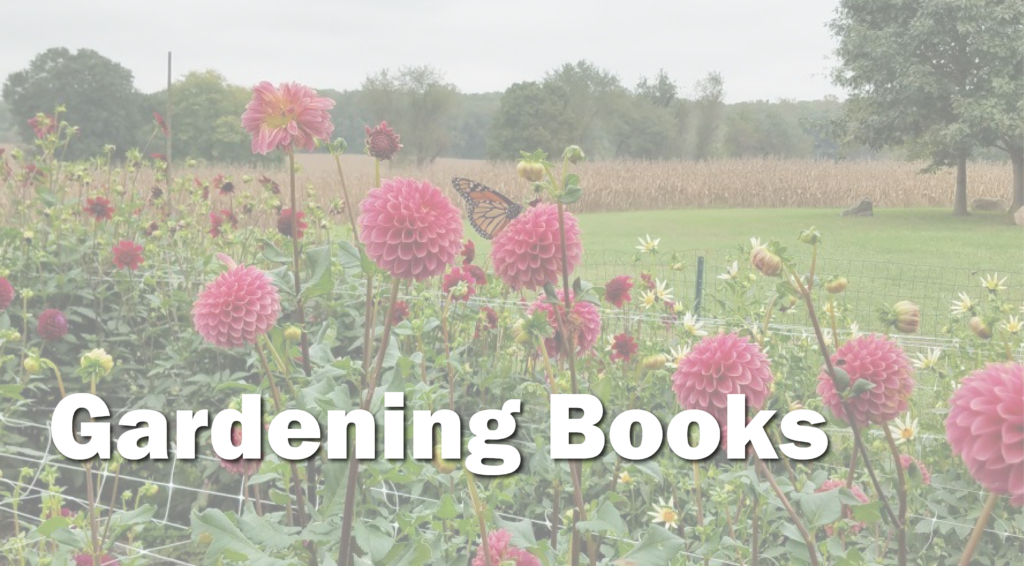
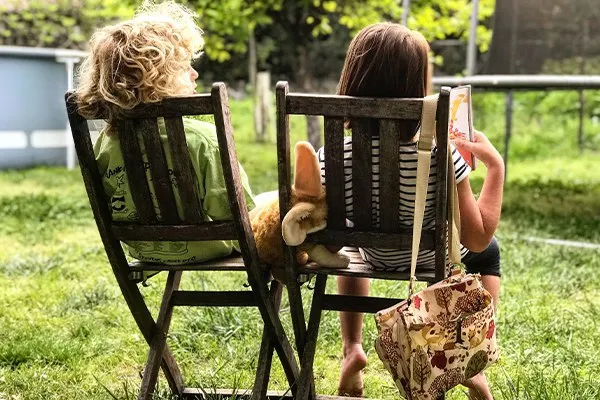
Do you have a book recommendation for young gardeners?
Here’s a list to get you started.
Online Gardening Resources

Online Garden-to-Table Recipes

There are many resources for recipes to make from your garden crops including seed companies, local farms, and online recipe cookbook catalogs. If you grow vegetables, these are very useful resources as the recipes feature the very plant you are growing. Here are few links to recipes you can make from your garden crops
Local Farms
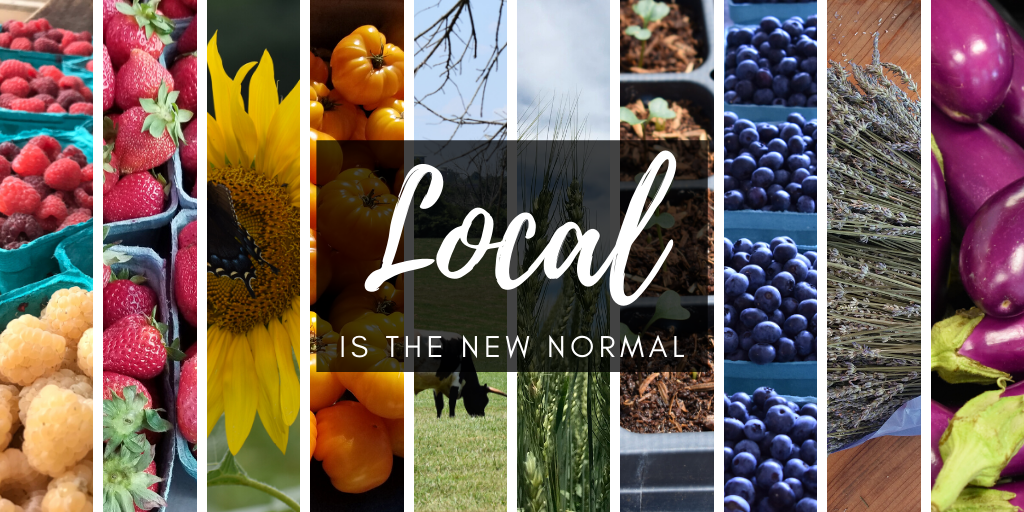
#LocalIsTheNewNormal #BuyLocal
- Support Our Local Farmers – Join a CSA and have fresh local produce delivered to you!
- Visit a local farmers’ market.
How to Support Farmers and Safely Shop at Farmers’ Markets
Montgomery County MD Food and Beverage Guide

The 2023 MoCo Food & Beverage Guide is here! The Guide from the Montgomery County Food Council is available online – delicious baked goods, prepared foods, condiments and more. The craft beverage list grows each year and find two dozen local and amazing farms:

Download Montgomery County’s Office of Agriculture 2023 Farmers Market Flyer to find a farmer’s market near you.

Support Our Local Farmers – Join a CSA and have fresh local produce delivered to you!
CSAs are seeing record numbers of subscribers http://ow.ly/eiQT50zD5lW – find your farmer here: http://ow.ly/jbO250zD56M
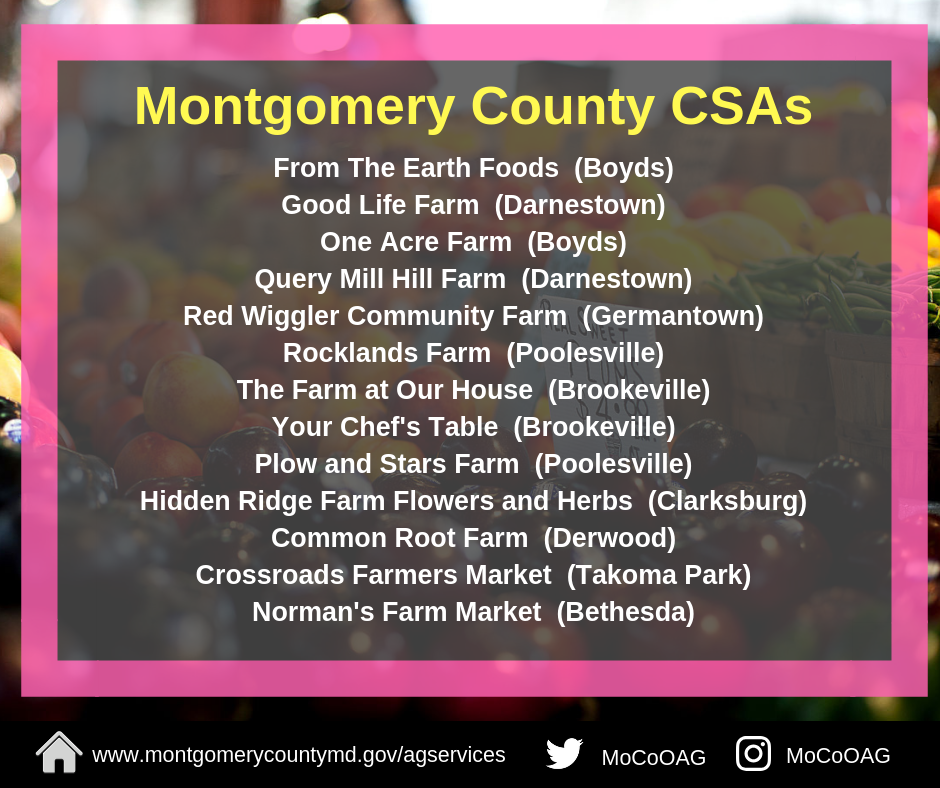
CSAs can take many forms, but essentially they are community supported farms in which members contribute to farming projects, usually by way of membership fees, in exchange for fresh, local produce. The concept came to the United States from Europe in the 1980s. They are a great way to take advantage of fresh, locally grown fruit, vegetables, herbs, and more while supporting nearby farms. Each one is different, some offer pickup locations in urban areas, some offer only farm-based pickups.
There are multiple CSAs located around the County offering a wide variety of products. CSAs begin taking sign-ups for spring and summer seasons in the early part of the year, and they tend to fill up FAST! Know of another CSA not on our list? Let us know! Montgomery Countryside Alliance also maintains a list:
http://www.mocoalliance.org/community-supported-agriculture.html
Check out the revised list of Mid-Atlantic native plants for pollinators and beneficial insects, from the Xerces Society.
Plant Tulip Bulbs in Pots Now for forced March/April Blooms
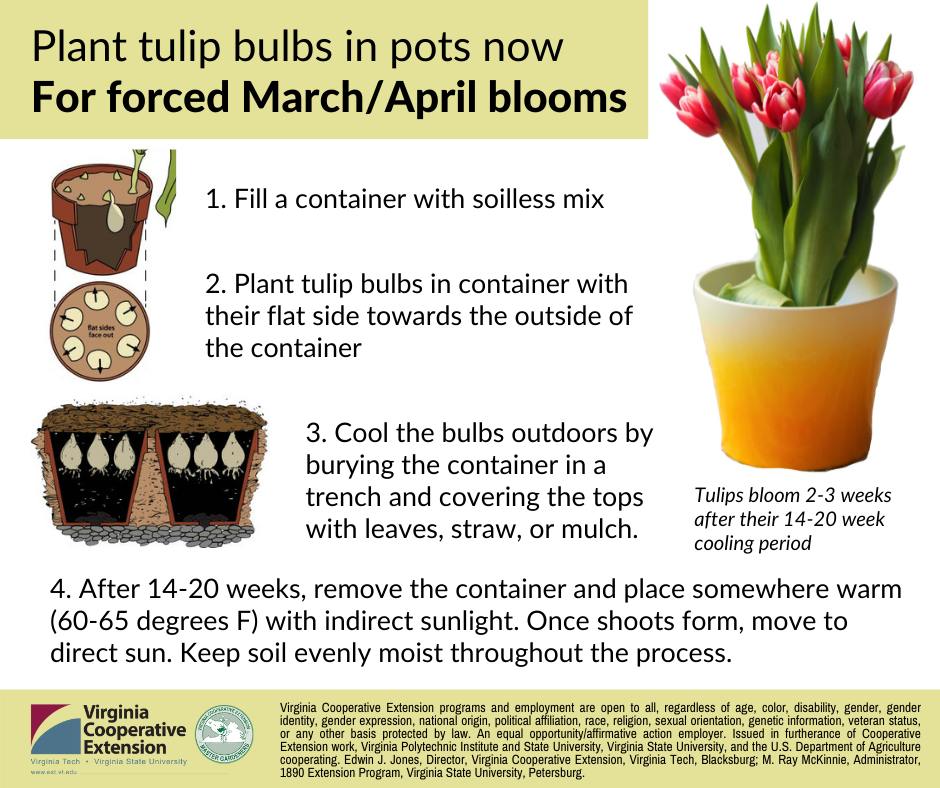
Blooming tulips planted in pots make an attractive centerpiece in the spring. To get those blooming tulips in March or April, plant your tulip bulbs now!
For March/April blooms, plant tulip bulbs in a container filled with soilless mix. Bulbs should be planted with flat sides towards the outside of the container, and they do not need to be planted as deep as with regular outdoor planting (plant so the tips of the bulb show above the potting mix).
Tulips require chilling to bloom. One way to achieve this is to bury your entire pot in a trench (put drainage material in the bottom of the trench first), then cover with leaves, straw, or mulch. Leave outside for a cooling time of 14-20 weeks, then bring inside to a warm place with partial sun.
Once shoots emerge, move to a warmer, full sun location. Tulips usually bloom 2-3 weeks after chilling.
For full instructions, including instructions for other types of bulbs:
Flowers and Groundcovers
- Pot bulbs for forced blooming indoors.
- Avoid walking in planting beds.
- Leave old flower stems standing for nesting pollinators.
- Cut back perennials that have turned to mush. Leave others with seed heads for the birds.
- After hard frost, sow seeds of spring-blooming hardy annuals and perennials then mark beds!
- Leave seedheads on Black-eyed Susan, Echinacea, Goldenrod, Sunflowers, and Thistles for the birds to enjoy over the winter.
- Sow wildflower seeds, such as California Poppies, for next spring.
- Start collecting plant seeds for next year and for trading.
- Renew your container plantings, which may be looking a bit ragged at this point. Pinch back overgrown plants. Pull out any spent ones and pop in some substitute annuals or mums. Keep them well-watered and add a little liquid fertilizer every few weeks to keep them going through early autumn.
- Pests to watch for: Aphids, 4-lined plant bug, spidermites, whiteflies, Deer, slugs, snails.
- Diseases to watch for: Powdery mildew, Damping off of seedlings, Botrytis on peonies, Volutella blight on pachysandra.
- See UMD’s HGIC Garden Tips for more details.
- For a list of native plant resources, visit: https://extension.umd.edu/hgic/topics/native-plant-resources
5 Million Trees Initiative
Maryland’s goal is to plant and maintain 5 million native trees by 2031. There are various ways you can get involved – plant trees and register them — or volunteer! A number of tree-planting assistance programs are available at the municipal, county, and state levels.
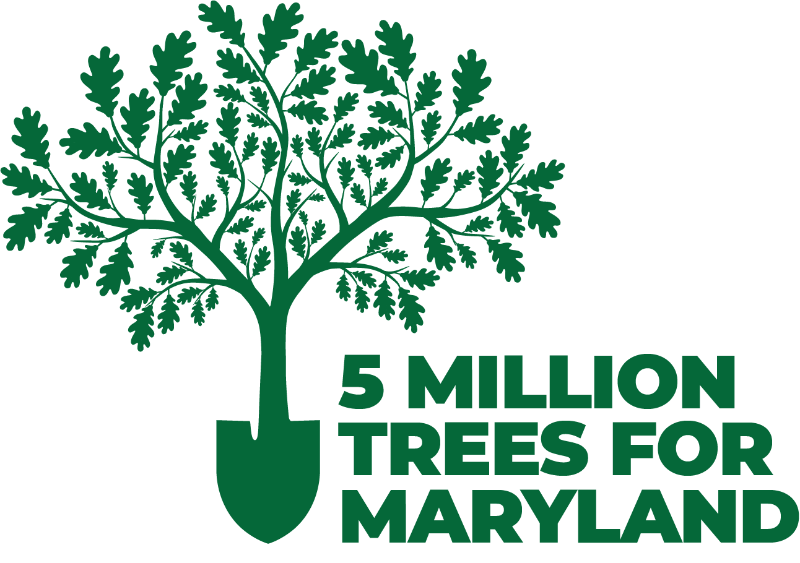
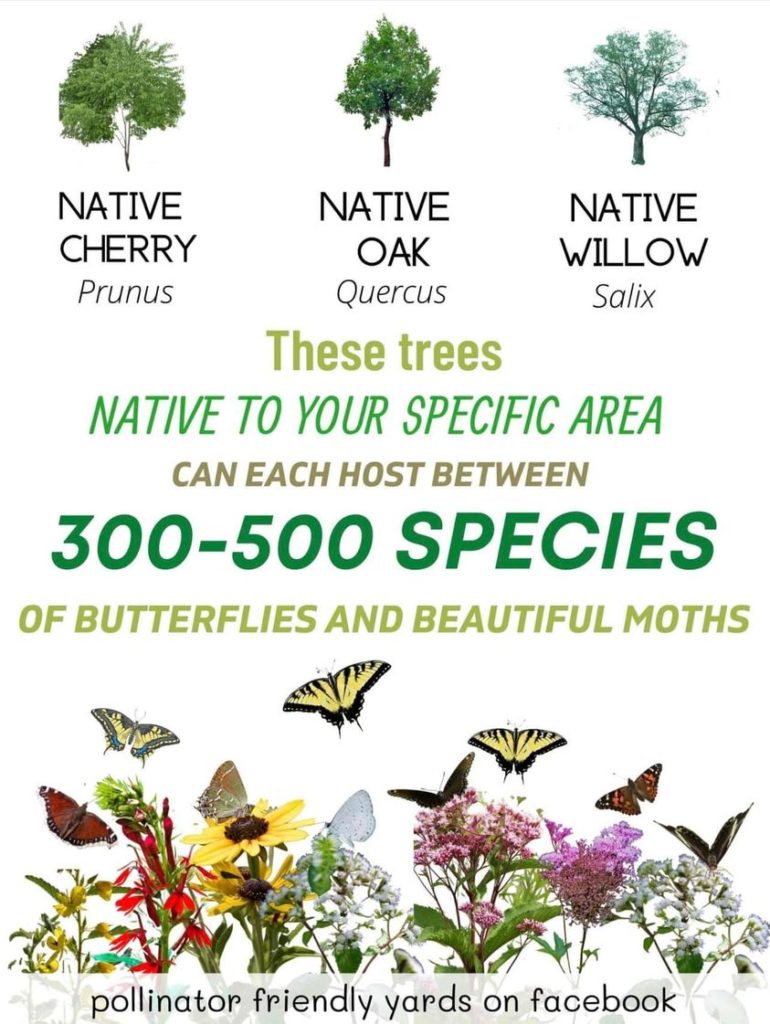
THIS is the SUPERPOWER of YOUR KEYSTONE NATIVE PLANTS.
- No exotic plant could ever achieve this.
- Want butterflies? Feed the caterpillars with keystone plants!
- Exotic plants will never support as many different species of caterpillars as the Keystone Natives can.
- Find your keystone native plants here by zip code.
If your zip code doesn’t give you enough information try zip codes of the nearest larger town or city. LINK: https://www.nwf.org/NativePlantFinder/
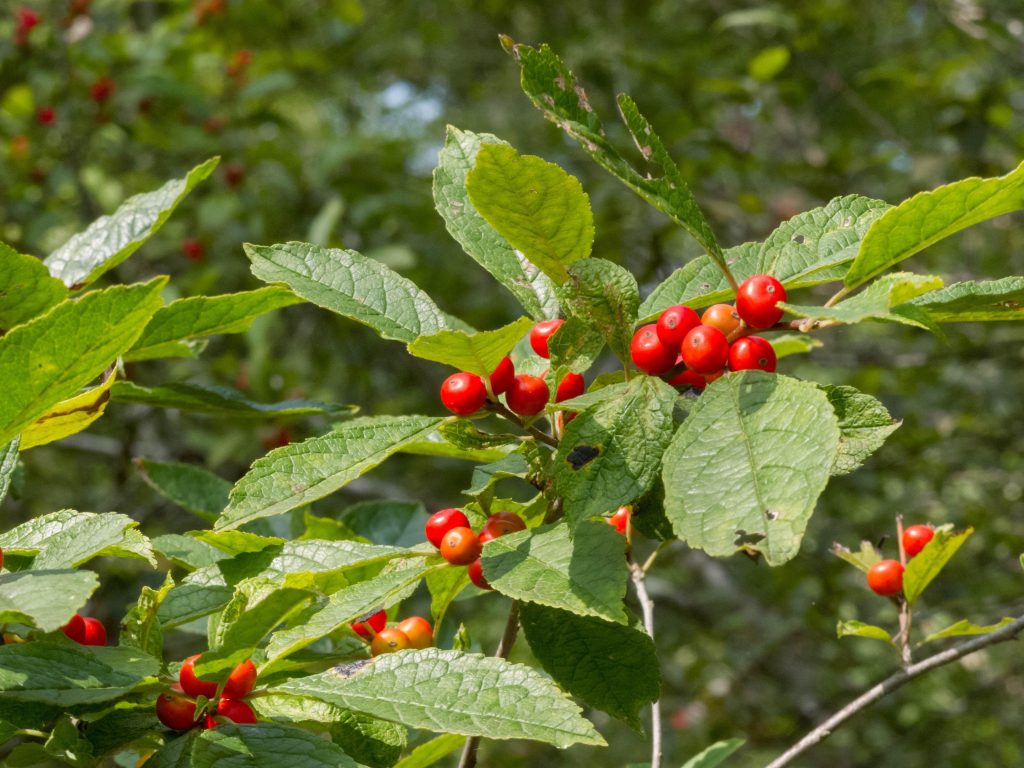
Winterberry Holly
Winterberry holly (Ilex verticillata) is multi-stemmed deciduous shrub which loses its leaves in the fall, revealing bright red berries that persist and provide beauty in the winter months. Many cultivars have been developed for enhanced berry production, more compact height (4-6 feet), and berry color (red, orange, and yellow).
Trees and Shrubs
- Water your cut Christmas tree daily.
- Moderately prune evergreens, especially hollies, for indoor decorating.
- Keep an eye out for bark damage from rabbits and deer.
- Gently remove layers of snow from outdoor evergreens with a broom.
- Prune stone fruit trees like cherries, plums, and peaches.
- Prune maples, dogwoods, birch, elm, walnut, and yellowwood to prevent “bleeding”.
- Prune out Fireblight damage Malus and Pyrus when very cold.
- Spray broadleaf evergreens with anti-desiccant to prevent dehydration.
- Use fallen leaves for mulch or compost.
- Water slowly and deeply if weather is very dry.
- Prune foundation shrubs and trees to be no closer than 1 foot from the house.
- Check often and water newly planted trees if they don’t pass the finger test (stick your finger deep into soil – dry? Water!)
- Look out for any Poison Ivy vines, which will turn crimson in the late fall and be easy to distinguish from other vines.
- Remove Ivy, Pachysandra, and other vine-like groundcover from under shrubs.
- Mulch or compost healthy leaves.
- Soil test established trees that have not been performing well.
- Put diseased leaves, pesticide-laden grass clippings and weed seeds out for recycling rather than the compost pile.
- Spray with dormant oil to decrease pest infestations.
- Remove dead and dying trees.
- Pests to watch for: azalea lacebug, bagworms, borers, caterpillars, gypsy moths, Japanese beetles, scale, sawfly, spidermites, leafminers, voles, and deer.
- Diseases to watch for: Fireblight
- For more tips, see UMD’s HGIC Garden Tips for more details.
Vegetable Planting Calendar
Download vegetable planting calendars from University of Maryland Extension, in English and Spanish. This page also has a link to a frost/freeze date calculator.
Herbs, Veggies, and Fruit
- Set up a cold frame, then plant lettuces, radishes, and carrots from seed.Vent cold frames on sunny days.
- Spread ashes from wood fires on your vegetable beds.
- Plant cover crop (i.e., rye, clover, hairy vetch, winter peas) where nothing is growing.
- Cover carrots, parsnips, and turnips with straw to extend harvest.
- Protect fig trees from freezing by piling up leaves around them.
- Harvest sweet potatoes.
- Cover strawberry beds with straw or pine needles.
- Harvest leaves of herbs used in cooking (rosemary, basil, sage) in early morning, for best flavor. Dry them indoors if you can’t use them right away.
- Cut herbs and flowers for drying indoors.
- Preserve gourds for display in the fall.
- Divide perennials and herbs. Pot up extras and give away at plant swaps.
- Thin seedlings.
- Harvest your herbs often and keep them trimmed back to encourage leafy growth.
- Apply dormant oil spray to fruit trees.
- Pests to watch for: Asparagus beetle, aphids, birds, cabbage worms, corn earworm, cutworms, deer, rabbits, squash vine borer, and tomato hornworm.
- Diseases to watch for: Apple scab, Cedar-apple rust.
- Here are some more UMD’s HGIC Garden Tips.
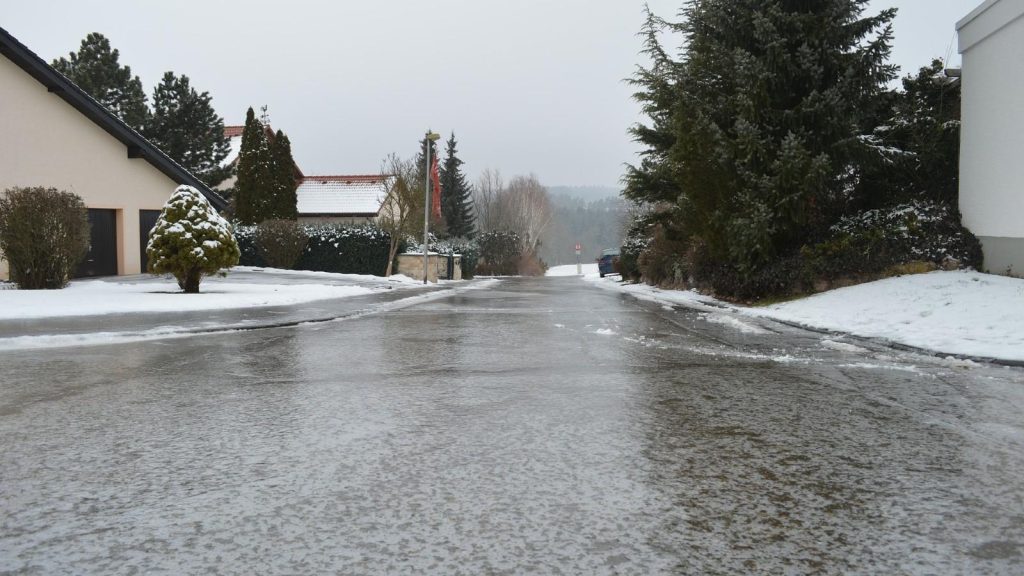
Melting Ice Safely
Each winter, people apply tons of ice-melting materials to sidewalks, driveways, and steps, often without regard to proper application procedures or to what the deicing substance contains. To prevent damage to your home and the environment, choose a deicer carefully.
Lawns
- Avoid walking on frozen grass to avoid damaging the crowns.
- Store your fertilizer and seeds in rodent-proof containers.
- Clean yard of all leaves and other debris.
- Turn your compost pile.
- Diseases to watch for: brown patch, and red thread
- Pests to watch for: Grubs
- See UMD’s HGIC Garden Tips for more details.
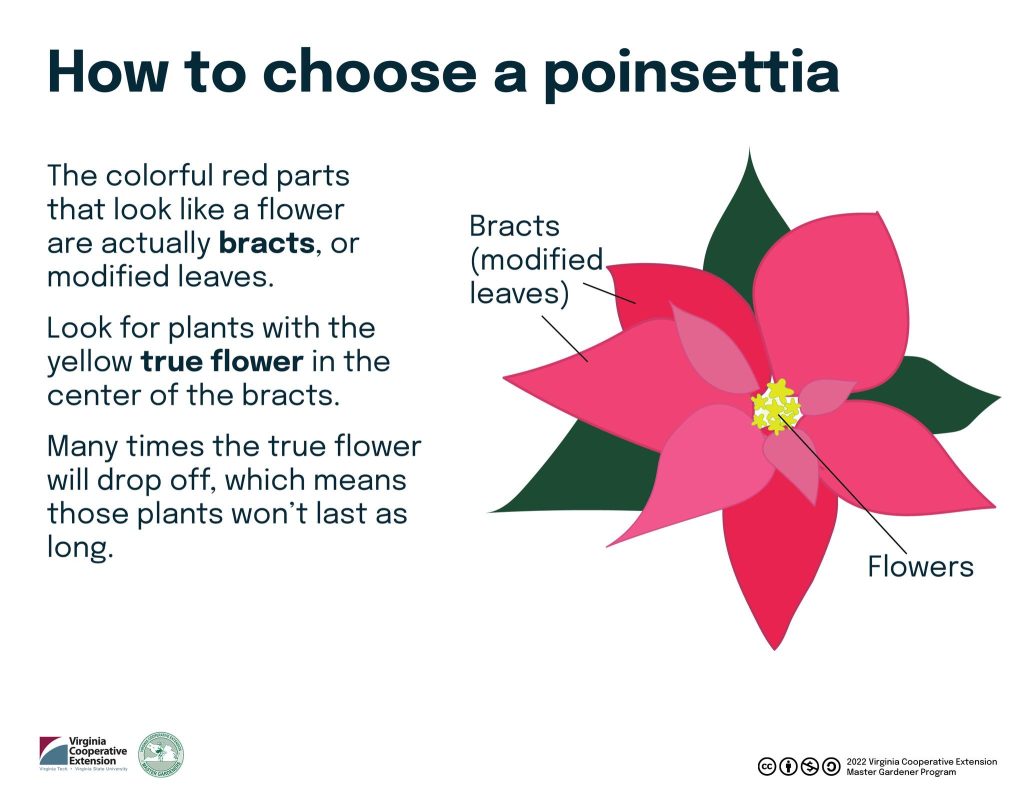
How to choose a Poinsettia
If you’re purchasing a poinsettia, make sure you choose one with the yellow true flowers!
Although they look like petals, the colorful red structures are actually bracts, or modified leaves. The true flowers are yellow and can be seen clustered in the center of the bracts.
Sometimes, especially after sitting out in big-box stores, these yellow flowers will fall off, which means your plant won’t last as long!
For more information on indoor plant care:
Indoors/Houseplants
- Keep watering your poinsettias and give them plenty of light. Ensure they are away from drafts and that the pots drain freely.
- Check houseplants, and any plants you brought indoors for the winter for insects.
- Keep succulents and cacti on the dry side.
- Start new indoor plants from cuttings – try an easy one such as violets.
- Repot and fertilize houseplants when new growth begins.
- Change water in cuttings started last fall and add 2-3 pieces of fish tank charcoal.
- Do not over water house plants.
- Check on your container plants daily and keep them well-watered.
- Rotate houseplants to promote even growth.
- Remove old leaves, damaged stems.
- Pinch out growing tips of leggy cuttings and plants that are overwintering.
- Clean the leaves of your indoor houseplants to prevent dust and film build-up.
- Pests to watch for: aphids, spider mites, mealybug, scale, and whitefly.
- See UMD’s HGIC Garden Tips for more information.
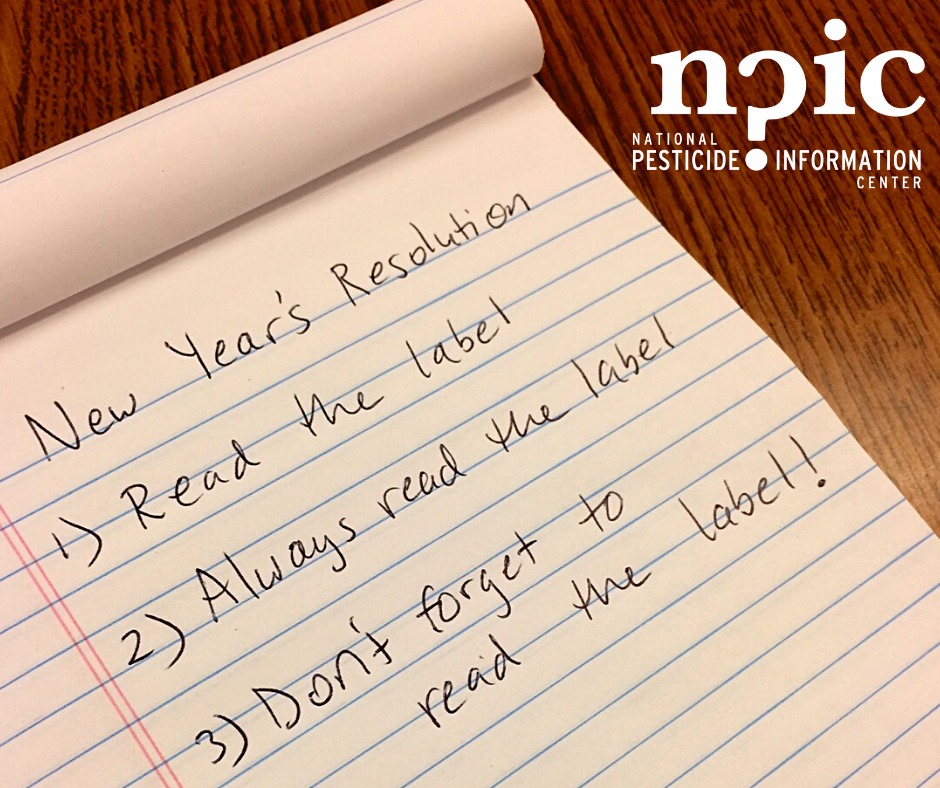
Read and follow label instructions on all pesticides and herbicides.
Start the year off by minimizing your #risk to #pesticides and always #ReadTheLabel! Learn more here: http://npic.orst.edu/health/readlabel.html
Questions about your label? Call us! 800-858-7378 M-F 8am-12pm PST
Indoor/Outdoor Insect and Wildlife Tips
- Watch for insect and disease problems throughout your garden.
- Put suet out for birds.
- Keep bird feeders clean and filled.
- Change the water in your birdbath daily and throw the Mosquito Dunk (or bits) into any standing water.
- Switch your deer deterrent spray.
- Set out traps for mice, moles, and voles.
- Watch for: carpenter ants, flies, mosquitos, stink bugs, termites, rabbits, raccoons, groundhogs, deer, mice, moles, snakes, squirrels, and voles.
- For more information, see UMD’s HGIC Garden Tips.
Source: University of Maryland’s Home and Garden Information Center (HGIC) and the Washington Gardener.
See more tips from HGIC:
Meadowside Nature Center, Montgomery Parks December Program Line-Up
It’s here, the winter program lineup! Here’s what’s happening at Meadowside this December.
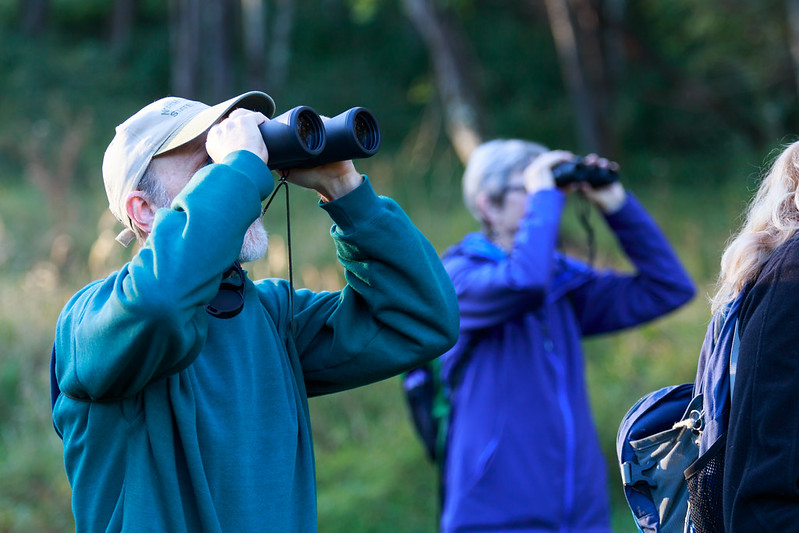
Dec 8 DIY Ugly Sweater
Dec 15 Holiday Hand-off
Dec 16 Etch and Sip Ornaments
Dec 16 Christmas Bird Count
Dec 31 Happy Noon Year’s Eve
Follow this link to view our December programs: https://mocoparks.org/3SMNE0f
Brookside Garden’s Greenscapes Event
Friday, February 16, 2024
9am – 4pm
| Don’t miss out on the Early Bird discount! |
| Don’t miss out on the Early Bird fee of $50 that ends on Friday, January 12. |
Join Brookside Gardens for a day of virtual lectures on Friday, February 16, 2024, as industry experts share valuable lessons from the field of creating sustainable landscapes. Lectures will reimagine traditional gardens with native plants and offer the latest in ecologically focused management strategies.

Take advantage of the Early Bird fee of $50 that ends on Friday, January 12. All sessions will be recorded and made available online to registrants. For more information and to register online, visit https://mocoparks.org/3lWVVus.
Let’s Talk Gardens
Thursdays 12 to 1 p.m.
Smithsonian Gardens

“Grow” your gardening know-how! Our free online gardening program, Let’s Talk Gardens, covers a wide range of topics presented by our own professional staff, as well as guest speakers.
And we encourage you to watch videos in our Let’s Talk Gardens Video Library.
